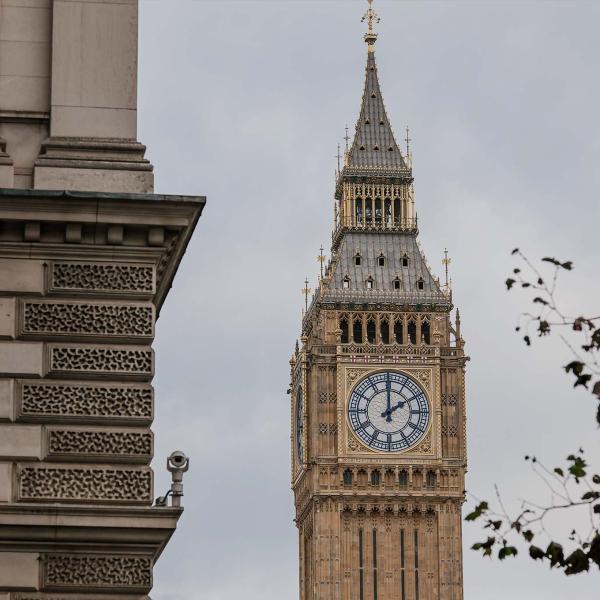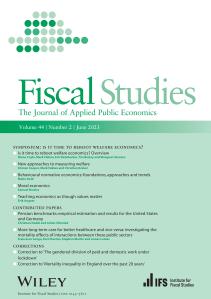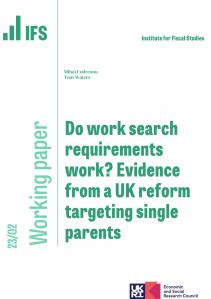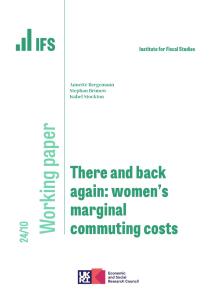Levelling Up Secretary Michael Gove today published the government’s ‘Levelling Up White Paper’. This is said to be a “blueprint for spreading opportunity more equally across the country”.
Summary of response from IFS researchers:
- Today’s White Paper marks a welcome first step, laying out the government’s thinking with a broad set of targets and much-needed detail on what levelling up is actually intended to achieve over the longer-term.
- The government’s twelve “missions” look sensible, if a little reminiscent of previous attempts to narrow geographic disparities, and in places perhaps overly ambitious.
- It is right to identify that “System change is not about a string of shiny, but ultimately short-lived, new policy initiatives. It is about root and branch reform of government and governance of the UK.” That is a measure of the scale of the ambition.
- There is a welcome focus on education, skills, health and transport connectivity. The White Paper also includes a range of metrics by which we can judge progress and success.
- The main challenge is that the funding and plan for how to actually deliver this progress is in relatively short supply. Indeed, many of the policy levers that lie directly within government control – tax policy, funding for councils, schools and public health – barely seem to get a look-in. The hope is clearly that new institutions and ‘system change’ can deliver over the longer term.
- The key question is whether the government can commit the funding, policy focus and reforms needed to deliver on its ‘national missions’. Otherwise, there is a risk that the government has chosen its destination with no sense of how it plans to get there.
New research for the IFS Deaton Review of Inequalities, funded by the Nuffield Foundation, suggests that the aim of creating a ‘globally competitive city’ in every part of the UK is ambitious:
- Labour productivity, as measured by GVA per hour, is far higher in London and a handful of nearby areas (Basingstoke, Slough and Heathrow, Swindon, Reading) than in the rest of the country.
- Preston, the most productive city in the North West, is nearly 30% less productive than London. The most productive city in the North East, Sunderland, is 20% less productive than London.
The aim of increasing pay and productivity in every part of the UK will be especially challenging given stagnation since 2008:
- Labour productivity increased by just 0.5% a year on average since 2008.
- Real average earnings had only just recovered to their pre-2008 levels before the pandemic hit.
The Inequality: IFS Deaton Review chapter on spatial inequalities is now available to read here.
Meeting education targets will be a tough challenge for the whole country - including London
The White Paper sets out an ambition to have 90% of pupils leaving primary school meeting expectations in reading, writing and maths by 2030. A serious attempt to tackle the long-standing challenge of under-achievement in primary school is certainly welcome. But the scale of the challenge here is enormous, and will require even top-performing areas to improve more quickly than historical trends. And learning loss from the pandemic means that, rather than making progress over the last few years, we’ve very likely gone backwards.
- Overall, in 2019 65% of pupils leaving primary school met expectations in reading, writing and maths. On a regional basis, pupils in London performed best (with 71% meeting expectations at the end of primary school), while those in Yorkshire and the East Midlands have the most ground to make up.
- But the gaps between most local areas are dwarfed by the gap between pupils’ current performance and the government’s ambition. In 2019, just 21 of 151 English local authorities had more than 70% of their primary school leavers meeting expectations. Just two – Richmond upon Thames and the City of London – broke 80%.
- Unfortunately, it is not at all clear that the Levelling Up White Paper delivers plans and funding to match the scale of this challenge. Without a significant injection of new funding, the fact remains that school spending per pupil will remain below its 2009-10 high point until 2024-25.
- Increasing the number of adults doing high-quality skills training is critical. The government's aim of getting an additional 200,000 people to complete high-quality skills training represents a 10% increase on learner numbers in 2019. However, between 2010 and 2019 the number of learners taking skills-based courses declined by 42%, so even if this uplift is achieved it will leave learner numbers well below previous levels.
- This is not necessarily a bad thing: as experience has shown, the quality of the training people receive matters as much - or more - than total learner numbers. The government’s mission emphasises the need for “high-quality” training; this focus can’t be lost if learners across the country are to receive the standard of training that they need to improve their skills and productivity.
On health, too, the scale of ambition is enormous
The focus on health is very welcome, not least because health inequalities are an ultimate consequence of a whole host of other social and economic inequalities.
There is huge variation in health outcomes across the country. In 2017-19, male life expectancy at birth in Glasgow City was 11 years lower than in Westminster (74 compared to 85), and the pandemic has further widened geographical disparities in health.
However, the target of raising overall healthy life expectancy by five years by 2035 is extremely ambitious given recent trends:
- Life expectancy at birth has stagnated in recent years. In England, male life expectancy at birth rose by just 1.5 years between 2009 and 2019, whilst female life expectancy at birth rose by just 1.1 years.
- Healthy life expectancy - the target outcome - has not improved at all over the last decade, and has in fact fallen since around 2015. Healthy life expectancy at birth fell by 0.5 years for women between 2009-11 and 2017-19, from 64 to 63.5. For men, healthy life expectancy at birth was 63.2 in 2017-19, just 0.2 years higher than in 2009-11.
The inclusion of wellbeing as a separate target also presents challenges:
- The places with low self-reported wellbeing are not those with low average wages or productivity. Average self-reported life satisfaction in London is among the lowest in the country. This is true even controlling for the fact that young people, who tend to have lower wellbeing, are disproportionately concentrated in London.
- Measures of self-reported wellbeing are not particularly responsive to contemporaneous living standards. It will be difficult for government to influence measures of wellbeing by 2030.
There is little in the way of new funding, and limited attention paid to the role of tax and spending decisions
Some obvious policy levers for levelling up (such as those relating to tax policy and funding for councils, public health and schools) are firmly within the government’s control, but barely feature in the White Paper.
Departments and public services will be expected to deliver on these ambitious ‘missions’ from within the budgets set at the Spending Review last autumn, with no new funding announced specifically to meet the challenges identified in the White Paper. There are three key issues here.
- First, the spending plans set out by the Chancellor in October were moderately generous by historic standards, but perhaps measure up less favourably against the scale of the ambition outlined in the White Paper. By 2025, many departments’ budgets will still be well below where they were in 2010, and face being asked to do more with considerably less.
- Second, the Treasury sets departmental spending plans in cash terms. In the face of higher inflation, the same cash budget is worth less in ‘real’ terms: the same pot of money can purchase fewer things and employ fewer staff. All else being equal, the surge in inflation since cash budgets were set in October will make it harder for departments and public service leaders to deliver on these new national ‘missions’.
- Third, deliberate policy choices since 2010 have made achieving some of the ‘missions’ in the White Paper more difficult to achieve. Between 2009-10 and 2019-20, local government spending (on non-education services) in England fell by £10.1 billion (17.3%), with bigger cuts in poorer areas. Schools’ funding was cut, and schools in more deprived areas faced bigger cuts than those in more prosperous areas. Now, the government wants to oversee a dramatic improvement in schools performance and for councils to help unleash local economic growth. To deliver on its new ambitions, the government may first have to unpick some of the choices made over the past 12 years.
IFS director Paul Johnson said:
“This white paper recognises the scale of the levelling up challenge. That lack of quick fixes, the long term perspective, and clarity about objectives are all very welcome, as is the recognition that real progress will require a change in governance in Whitehall and beyond.
This is all just a very first step though. The targets are largely in the right areas, but many look extremely ambitious - that is to say highly unlikely to be met, even with the best policies and much resource. There is little detail on how most of them will be met, and less detail on available funding. There is something for everyone, and hence little sense of prioritisation: ambition and resource will be spread very thin.
Meeting the core ambition of simultaneously improving education and skill levels and availability of high paying jobs in poorer regions will prove extremely challenging. Without that, levelling up will not happen. It will require the level of focus that has gone into this white paper being developed and maintained over decades.”















